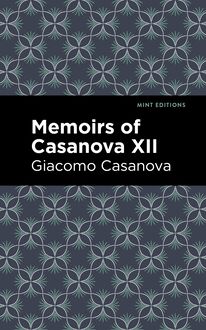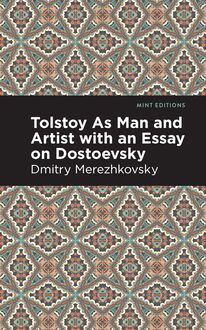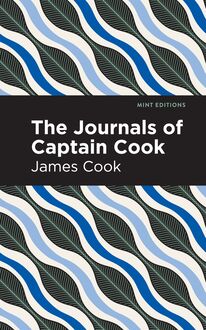-
 Univers
Univers
-
 Ebooks
Ebooks
-
 Livres audio
Livres audio
-
 Presse
Presse
-
 Podcasts
Podcasts
-
 BD
BD
-
 Documents
Documents
-
- Cours
- Révisions
- Ressources pédagogiques
- Sciences de l’éducation
- Manuels scolaires
- Langues
- Travaux de classe
- Annales de BEP
- Etudes supérieures
- Maternelle et primaire
- Fiches de lecture
- Orientation scolaire
- Méthodologie
- Corrigés de devoir
- Annales d’examens et concours
- Annales du bac
- Annales du brevet
- Rapports de stage
La lecture à portée de main
Vous pourrez modifier la taille du texte de cet ouvrage
Découvre YouScribe en t'inscrivant gratuitement
Je m'inscrisDécouvre YouScribe en t'inscrivant gratuitement
Je m'inscrisEn savoir plus
Vous pourrez modifier la taille du texte de cet ouvrage
En savoir plus

Description
Known for its advances in literature, industrialization, politics, and science, the Victorian era was a prominent time in British history. However, author Lytton Strachey remembers Queen Victoria as a person instead of just focusing on her accomplishments. First starting with a brief history of her predecessors and origins, Victoria was crowned just as she came of age. Having only been eighteen, Queen Victoria was widely unfamiliar to her subjects when she was coronated. While her advisors and elders attempted to train her for her regal duties and present her to society, Victoria struggled to adjust to her new life. However, after a short period of adjustment, Victoria transformed into an iconic figure, known and celebrated for her elevated sense of morality. In 1840, Victoria married her cousin, Prince Albert, a match arranged by their families. But while Albert brought financial success, he was still unpopular in high society London, unlike his wife, who was growing to be more beloved every day.
First published in 1921, Lytton Strachey’s Queen Victoria follows the inventive biographical style Strachey created, featuring witty, irreverent prose paired with the focus on human characteristics rather than just their achievements. Told in relation to the prominent figures in each stage of her life, Queen Victoria is an intimate perspective of the legendary ruler. Praised for its accuracy and entertainment, Queen Victoria led Lytton Strachey to be awarded the James Tait Black Memorial Prize, one of the oldest awards in British literature.
This edition of Queen Victoria by Lytton Strachey features an eye-catching new cover design and is presented in a font that is both modern and readable. With these accommodations, this edition is accessible and appealing to contemporary audiences, restoring Queen Victoria to modern standards while preserving the original innovation and insight of Lytton Strachey’s work.
Sujets
Informations
| Publié par | Mint Editions |
| Date de parution | 09 mars 2021 |
| Nombre de lectures | 0 |
| EAN13 | 9781513278940 |
| Langue | English |
| Poids de l'ouvrage | 3 Mo |
Informations légales : prix de location à la page 0,0500€. Cette information est donnée uniquement à titre indicatif conformément à la législation en vigueur.
Extrait
Queen Victoria
Lytton Strachey
Queen Victoria was first published in 1921.
This edition published by Mint Editions 2021.
ISBN 9781513278483 | E-ISBN 9781513278940
Published by Mint Editions®
minteditionbooks.com
Publishing Director: Jennifer Newens
Design & Production: Rachel Lopez Metzger
Project Manager: Micaela Clark
Typesetting: Westchester Publishing Services
C ONTENTS
I. A NTECEDENTS
II. C HILDHOOD
III. L ORD M ELBOURNE
IV. M ARRIAGE
V. L ORD P ALMERSTON
VI. L AST Y EARS OF P RINCE C ONSORT
VII. W IDOWHOOD
VIII. G LADSTONE AND L ORD B EACONSFIELD
IX. O LD A GE
X. T HE E ND
I
A NTECEDENTS
I
O N N OVEMBER 6 , 1817 , DIED THE Princess Charlotte, only child of the Prince Regent, and heir to the crown of England. Her short life had hardly been a happy one. By nature impulsive, capricious, and vehement, she had always longed for liberty; and she had never possessed it. She had been brought up among violent family quarrels, had been early separated from her disreputable and eccentric mother, and handed over to the care of her disreputable and selfish father. When she was seventeen, he decided to marry her off to the Prince of Orange; she, at first, acquiesced; but, suddenly falling in love with Prince Augustus of Prussia, she determined to break off the engagement. This was not her first love affair, for she had previously carried on a clandestine correspondence with a Captain Hess. Prince Augustus was already married, morganatically, but she did not know it, and he did not tell her. While she was spinning out the negotiations with the Prince of Orange, the allied sovereign—it was June, 1814—arrived in London to celebrate their victory. Among them, in the suite of the Emperor of Russia, was the young and handsome Prince Leopold of Saxe-Coburg. He made several attempts to attract the notice of the Princess, but she, with her heart elsewhere, paid very little attention. Next month the Prince Regent, discovering that his daughter was having secret meetings with Prince Augustus, suddenly appeared upon the scene and, after dismissing her household, sentenced her to a strict seclusion in Windsor Park. “God Almighty grant me patience!” she exclaimed, falling on her knees in an agony of agitation: then she jumped up, ran down the backstairs and out into the street, hailed a passing cab, and drove to her mother’s house in Bayswater. She was discovered, pursued, and at length, yielding to the persuasions of her uncles, the Dukes of York and Sussex, of Brougham, and of the Bishop of Salisbury, she returned to Carlton House at two o’clock in the morning. She was immured at Windsor, but no more was heard of the Prince of Orange. Prince Augustus, too, disappeared. The way was at last open to Prince Leopold of Saxe-Coburg.
This Prince was clever enough to get round the Regent, to impress the Ministers, and to make friends with another of the Princess’s uncles, the Duke of Kent. Through the Duke he was able to communicate privately with the Princess, who now declared that he was necessary to her happiness. When, after Waterloo, he was in Paris, the Duke’s aide-de-camp carried letters backwards and forwards across the Channel. In January 1816 he was invited to England, and in May the marriage took place.
The character of Prince Leopold contrasted strangely with that of his wife. The younger son of a German princeling, he was at this time twenty-six years of age; he had served with distinction in the war against Napoleon; he had shown considerable diplomatic skill at the Congress of Vienna; and he was now to try his hand at the task of taming a tumultuous Princess. Cold and formal in manner, collected in speech, careful in action, he soon dominated the wild, impetuous, generous creature by his side. There was much in her, he found, of which he could not approve. She quizzed, she stamped, she roared with laughter; she had very little of that self-command which is especially required of princes; her manners were abominable. Of the latter he was a good judge, having moved, as he himself explained to his niece many years later, in the best society of Europe, being in fact “what is called in French de la fleur des pois.” There was continual friction, but every scene ended in the same way. Standing before him like a rebellious boy in petticoats, her body pushed forward, her hands behind her back, with flaming cheeks and sparkling eyes, she would declare at last that she was ready to do whatever he wanted. “If you wish it, I will do it,” she would say. “I want nothing for myself,” he invariably answered; “When I press something on you, it is from a conviction that it is for your interest and for your good.”
Among the members of the household at Claremont, near Esher, where the royal pair were established, was a young German physician, Christian Friedrich Stockmar. He was the son of a minor magistrate in Coburg, and, after taking part as a medical officer in the war, he had settled down as a doctor in his native town. Here he had met Prince Leopold, who had been struck by his ability, and, on his marriage, brought him to England as his personal physician. A curious fate awaited this young man; many were the gifts which the future held in store for him—many and various—influence, power, mystery, unhappiness, a broken heart. At Claremont his position was a very humble one; but the Princess took a fancy to him, called him “Stocky,” and romped with him along the corridors. Dyspeptic by constitution, melancholic by temperament, he could yet be lively on occasion, and was known as a wit in Coburg. He was virtuous, too, and served the royal menage with approbation. “My master,” he wrote in his diary, “is the best of all husbands in all the five quarters of the globe; and his wife bears him an amount of love, the greatness of which can only be compared with the English national debt.” Before long he gave proof of another quality—a quality which was to colour the whole of his life-cautious sagacity. When, in the spring of 1817, it was known that the Princess was expecting a child, the post of one of her physicians-in-ordinary was offered to him, and he had the good sense to refuse it. He perceived that his colleagues would be jealous of him, that his advice would probably not be taken, but that, if anything were to go wrong, it would be certainly the foreign doctor who would be blamed. Very soon, indeed, he came to the opinion that the low diet and constant bleedings, to which the unfortunate Princess was subjected, were an error; he drew the Prince aside, and begged him to communicate this opinion to the English doctors; but it was useless. The fashionable lowering treatment was continued for months. On November 5, at nine o’clock in the evening, after a labour of over fifty hours, the Princess was delivered of a dead boy. At midnight her exhausted strength gave way. When, at last, Stockmar consented to see her; he went in, and found her obviously dying, while the doctors were plying her with wine. She seized his hand and pressed it. “They have made me tipsy,” she said. After a little he left her, and was already in the next room when he heard her call out in her loud voice: “Stocky! Stocky!” As he ran back the death-rattle was in her throat. She tossed herself violently from side to side; then suddenly drew up her legs, and it was over.
The Prince, after hours of watching, had left the room for a few moments’ rest; and Stockmar had now to tell him that his wife was dead. At first he could not be made to realise what had happened. On their way to her room he sank down on a chair while Stockmar knelt beside him: it was all a dream; it was impossible. At last, by the bed, he, too, knelt down and kissed the cold hands. Then rising and exclaiming, “Now I am quite desolate. Promise me never to leave me,” he threw himself into Stockmar’s arms.
II
T HE TRAGEDY AT C LAREMONT WAS of a most upsetting kind. The royal kaleidoscope had suddenly shifted, and nobody could tell how the new pattern would arrange itself. The succession to the throne, which had seemed so satisfactorily settled, now became a matter of urgent doubt.
George III was still living, an aged lunatic, at Windsor, completely impervious to the impressions of the outer world. Of his seven sons, the youngest was of more than middle age, and none had legitimate offspring. The outlook, therefore, was ambiguous. It seemed highly improbable that the Prince Regent, who had lately been obliged to abandon his stays, and presented a preposterous figure of debauched obesity, could ever again, even on the supposition that he divorced his wife and re-married, become the father of a family. Besides the Duke of Kent, who must be noticed separately, the other brothers, in order of seniority, were the Dukes of York, Clarence, Cumberland, Sussex, and Cambridge; their situations and prospects require a brief description. The Duke of York, whose escapades in times past with Mrs. Clarke and the army had brought him into trouble, now divided his life between London and a large, extravagantly ordered and extremely uncomfortable country house where he occupied himself with racing, whist, and improper stories. He was remarkable among the princes for one reason: he was the only one of them—so we are informed by a highly competent observer—who had the feelings of a gentleman. He had been long married to the Princess Royal of Prussia, a lady who rarely went to bed and was perpetually surrounded by vast numbers of dogs, parrots, and monkeys. They had no children. The Duke of Clarence had lived for many years in complete obscurity with Mrs. Jordan, the actress, in Bushey Park. By her he had had a large family of sons and daughters, and had appeared, in effect to be married to her, when he suddenly separated from her and offered to marry Miss Wykeham, a crazy woman of large fortune, who, however, would have nothing to say to him. Shortly afterwards Mrs. Jordan di
-
 Univers
Univers
-
 Ebooks
Ebooks
-
 Livres audio
Livres audio
-
 Presse
Presse
-
 Podcasts
Podcasts
-
 BD
BD
-
 Documents
Documents
-
Jeunesse
-
Littérature
-
Ressources professionnelles
-
Santé et bien-être
-
Savoirs
-
Education
-
Loisirs et hobbies
-
Art, musique et cinéma
-
Actualité et débat de société
-
Jeunesse
-
Littérature
-
Ressources professionnelles
-
Santé et bien-être
-
Savoirs
-
Education
-
Loisirs et hobbies
-
Art, musique et cinéma
-
Actualité et débat de société
-
Actualités
-
Lifestyle
-
Presse jeunesse
-
Presse professionnelle
-
Pratique
-
Presse sportive
-
Presse internationale
-
Culture & Médias
-
Action et Aventures
-
Science-fiction et Fantasy
-
Société
-
Jeunesse
-
Littérature
-
Ressources professionnelles
-
Santé et bien-être
-
Savoirs
-
Education
-
Loisirs et hobbies
-
Art, musique et cinéma
-
Actualité et débat de société
- Cours
- Révisions
- Ressources pédagogiques
- Sciences de l’éducation
- Manuels scolaires
- Langues
- Travaux de classe
- Annales de BEP
- Etudes supérieures
- Maternelle et primaire
- Fiches de lecture
- Orientation scolaire
- Méthodologie
- Corrigés de devoir
- Annales d’examens et concours
- Annales du bac
- Annales du brevet
- Rapports de stage




















